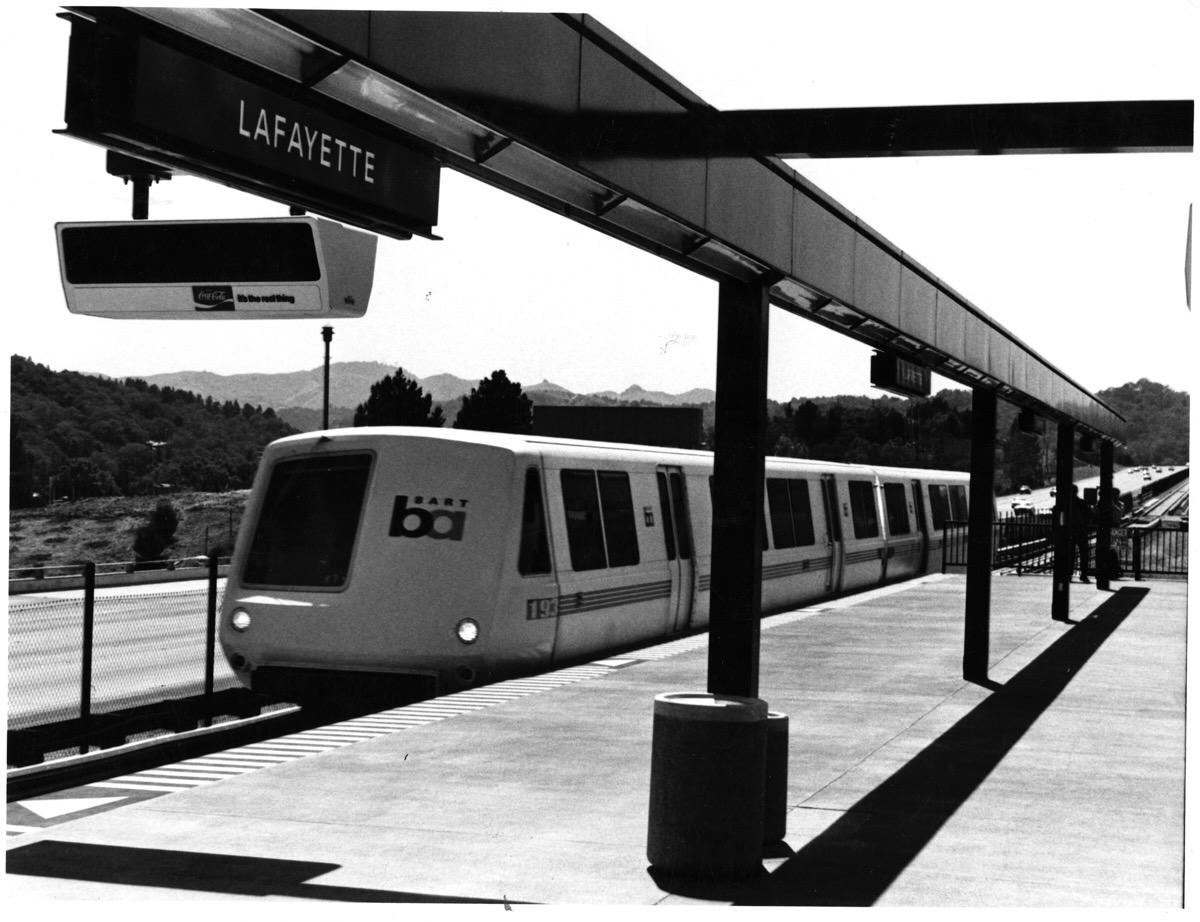The postwar period brought thousands of newcomers to Lafayette, and with the new residents eventually came cityhood. In a special election held in 1968, voters cast 3,279 votes in favor and 2,692 against the proposal to incorporate.
Despite the continuing development of the downtown area and the advent of the Bay Area Rapid Transit system linking the city to Oakland and San Francisco, Lafayette seems likely to remain rural in atmosphere and pastoral in scenery. Indicative of this attitude is the great uproar that greets most proposals for massive building projects, higher neighborhood densities and hillside construction.

One of BART’s sleek trains is pictured here heading east just before reaching the Lafayette station.

Lafayette’s first city council sat for an historic photo in 1968 after citizens voted almost 3 to 2 in favor of incorporation. A previous try for cityhood had been defeated in October, 1959. Pictured left to right are Jack Marchant, Mayor Donn Black, Dr. J. Gordon Holmes, Robert M. Fisher and Martin Cogburn.
